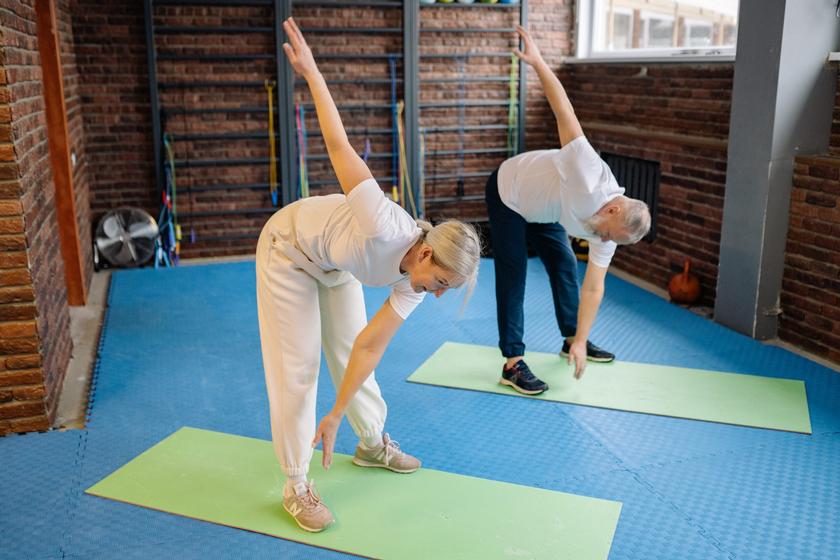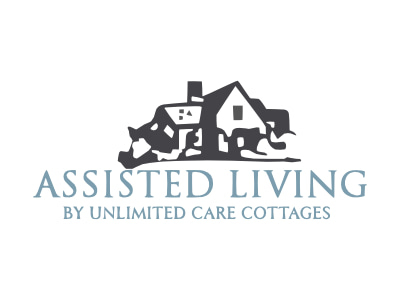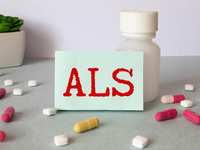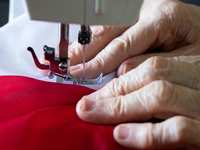Exploring Physical Activity In Assisted Living Residences

Exploring Physical Activity in Assisted Living Residences. Delving into the realm of Physical Activity within Assisted Living Residences unveils a multifaceted and intricate journey. This subject encompasses far more than the mere arrangement of exercise sessions or the introduction of fitness routines. Its essence penetrates much deeper, entailing a comprehensive comprehension of the distinct requirements and constraints of the elderly inhabitants, all the while acknowledging the profound and far-reaching consequences that physical activity can bestow upon their holistic well-being. This voyage of exploration transcends superficial observations, delving into the realm of rigorous scientific inquiry, meticulous data analysis, and the meticulous orchestration of strategic initiatives.
When we embark on the discourse of Exploring Physical Activity in Assisted Living Residences, we embark on a mission to enrich the lives of senior residents by means of purposeful and intentional movement – a pursuit that should rightfully assume a position of utmost importance within every assisted living community. This journey signifies an endeavor that extends beyond the ordinary; it signifies an earnest commitment to fostering an improved quality of life for seniors through a proactive embrace of physical vitality.
TABLE OF CONTENTS:
- Exploring Physical Activity in Assisted Living Residences
- Gearing Up For Our Next Discussion: Benefits of Physical Activity
- Benefits of Physical Activity for Assisted Living Residents
- Exploring Physical Activity in Assisted Living Residences
- Promoting Physical Activity in Assisted Living Communities
- Engaging Assisted Living Residents in Physical Activities
- Exploring Physical Activity in Assisted Living Residences
- Exploring Physical Activity in Assisted Living Residences
- FAQs in Relation to Exploring Physical Activity in Assisted Living Residences
- Conclusion
EXPLORING PHYSICAL ACTIVITY IN ASSISTED LIVING RESIDENCES
THE IMPORTANCE OF PHYSICAL ACTIVITY FOR ASSISTED LIVING RESIDENTS
The significance of physical activity in assisted living facilities and senior living communities cannot be understated. It plays a crucial role in maintaining both the mental and physical health of older adults.
THE IMPACT OF PHYSICAL ACTIVITY ON MENTAL HEALTH
Regular physical activity not only promotes fitness but also boosts mental health in nursing homes. Unfortunately, a concerning trend shows that 79-87% of care home residents spend most of their time being sedentary rather than active.
This alarming statistic highlights the need for action. Regular physical activity has been demonstrated to advance intellectual capacity and elevate disposition, which is fundamental for psychological well-being among seniors.
GENDER DIFFERENCES IN PARTICIPATION LEVELS
Gender differences play a role in the participation levels of activity programs. Men and women tend to show distinct preferences when it comes to engaging in activity programs. For example, group-based exercises may appeal more to women, while men may prefer individualized or competitive games.
This insight provides valuable information for long-term care providers like Unlimited Care Cottages. They should consider tailoring their fitness programs to accommodate these gender-specific tendencies.
GEARING UP FOR OUR NEXT DISCUSSION: BENEFITS OF PHYSICAL ACTIVITY
As we move forward from understanding the importance of physical activity, let’s prepare ourselves for an exciting exploration of the numerous benefits it brings, especially among older individuals residing in assisted living facilities.
BENEFITS OF PHYSICAL ACTIVITY FOR ASSISTED LIVING RESIDENTS
The benefits of physical activity for older individuals in assisted living facilities are numerous. AI is revolutionizing industries in a major way, just like how physical activity can have an enormous effect on the well-being of Cottage Health residents.
Just as AI can help increase profit margins, increasing levels of physical activity and reducing sedentary behavior have been proven to significantly improve the health of Cottage Health (CH) residents. The impact? Think improved heart health, enhanced mood stability, and reduced risk of chronic diseases – the list goes on.
Consider this: A study found that regular movement improves overall quality of life by promoting independence and boosting self-esteem.
DATA COLLECTION AND RESEARCH ON PHYSICAL ACTIVITY IN ASSISTED LIVING RESIDENCES
We’re not just talking about physical well-being here. Research into psychosocial health among older adults residing in assisted living residences reveals equally impressive results.
UNDERSTANDING THE SAMPLE SIZE AND ELIGIBILITY CRITERIA FOR STUDIES
- Gearing up for Better Quality Data:
- If you thought selecting a sample size was all about luck, think again. Just as hiring top-notch writers or editors at companies like Upwork or Fiverr requires strategy, choosing eligible residents for studies involves stringent criteria related to their current healthcare needs.For instance, in an intervention study named MoveMore, out of 300 CH residents screened, only 153 registered after meeting all required conditions.
- Aiming High with Cognitive Abilities:
- No matter what age we might be, cognitive abilities play a crucial role. Just as collaboration tools allow businesses to scale, regular workouts stimulate brain cells, leading to improved memory retention capabilities and heightened alertness, which contributes to slowing down age-related cognitive decline.
As we dig deeper, it’s easy to see why thorough research and careful analysis are crucial for crafting strategies that boost engagement among seniors. This sets the stage for a brighter, healthier future in the supportive environment provided.
Key Takeaway:
Physical activity isn’t just a game-changer for industries, it’s also one for seniors in assisted living residences. Regular movement boosts heart health, mood stability, and self-esteem – all while reducing the risk of chronic diseases. Meanwhile, research on psychosocial health reveals impressive benefits too. Just like strategic hiring or using collaboration tools effectively can transform businesses, well-planned
EXPLORING PHYSICAL ACTIVITY IN ASSISTED LIVING RESIDENCES
In the medical world, physical activity is an essential element for elderly individuals living in assisted-living residences. How can we determine the influence of physical activity, including group activities, on cognitive abilities and overall well-being in assisted living communities? The answer lies in systematic review and data collection.
“Collecting precise and relevant data allows us to identify patterns and understand the correlation between regular exercise and improved health among seniors.”
– A Leading Researcher at Unlimited Care Cottages
THE SCIENCE AND ART OF SAMPLE SIZE SELECTION AND ELIGIBILITY CRITERIA
To ensure the highest quality research outcomes, two key factors come into play – determining an appropriate sample size and establishing strict eligibility criteria. Let’s delve deeper into these concepts.
- Sample Size: It’s not about quantity, but rather quality when it comes to gathering meaningful insights from studies focused on preventing health decline in senior residents. In our example of the MoveMore intervention study, we initially screened 300 participants, providing ample statistical significance without overwhelming resources.
- Eligibility Criteria: Equally important is selecting eligible residents who can safely engage in physical activities designed to enhance their cognitive abilities. Out of those screened for the MoveMore study, only 153 met the high standard, making them suitable candidates.
PRECISE DATA COLLECTION – LEAVING NO ROOM FOR ERROR.
The meticulous process ensures there is no margin for error. By design, it avoids potential risks associated with inappropriate exercise routines or overexerting vulnerable individuals.
| Purposeful Sampling |
|---|
| This approach guarantees that the collected data accurately reflects the intended research outcomes, contributing significantly to our understanding of how physical activity impacts the cognition of elderly citizens within assisted living residences.
Remember. An expertly conducted systematic review goes a long way in ensuring accuracy throughout all stages of research. |
Key Takeaway:
Getting a grip on physical activity’s role in assisted living residences isn’t just about breaking a sweat. It calls for sharp focus, from choosing the right sample size to setting eligibility criteria. Accurate data collection is key, ensuring each step of research lands with precision like an Olympic gymnast sticking the landing.
PROMOTING PHYSICAL ACTIVITY IN ASSISTED LIVING COMMUNITIES
Physical activity plays a crucial role in maintaining good health and well-being. Our mission to improve the quality of life for residents includes encouraging regular physical activity.
“Incorporating regular physical activities into daily routines can greatly reduce stress among seniors. It also fosters social connection within assisted living communities.”
CREATING OPPORTUNITIES FOR EXERCISE
The key to promoting fitness is to provide opportunities for movement within the care settings. This can include setting up group exercises or walking groups around the community premises. It is important to consider the preferences and abilities of residents, including those who prefer solo workouts.
To cater to all mobility levels, accessible equipment like treadmills or stationary bikes can be added. The objective is to construct a welcoming atmosphere that encourages exercise for all.
STRATEGIES TAILORED FOR SENIORS
In addition to providing facilities, specific strategies should be implemented to enhance participation among seniors. Offering low-impact exercises such as chair yoga or water aerobics can make physical activities enjoyable and manageable for older adults.
- Care staff must supervise all activities to ensure adherence to safety measures.
- Necessary precautions should be taken during every activity session to prevent injuries.
THE ROLE OF PHYSICAL ACTIVITY IN MENTAL WELLBEING
Physical activity not only benefits overall health but also has a positive impact on mental well-being. Regular exercise has been shown to be an effective tool against stress. The National Institute on Aging (NIA) also recognizes the importance of group exercises in fostering camaraderie and solo routines in providing time for quiet introspection, both contributing significantly to improving mental wellness among assisted living residents.
Ready for more insights? We’ll explore even more ways to enrich the community experience at Unlimited Care Cottages next.
<.– next section>
ENGAGING ASSISTED LIVING RESIDENTS IN PHYSICAL ACTIVITIES
We’re keeping the ball rolling on our mission to get our older folks up and moving more.
Key Takeaway:
Physical activity is a vital cog in the wheel of senior well-being, reducing stress and fostering social bonds. In assisted living communities, creating opportunities for exercise – be it group sessions or solo workouts – can make a world of difference. Tailoring strategies to seniors’ abilities and preferences, with safety measures firmly in place, not only promotes overall health but also bolsters mental
EXPLORING PHYSICAL ACTIVITY IN ASSISTED LIVING RESIDENCES
Engaging residents in physical activities is both

















